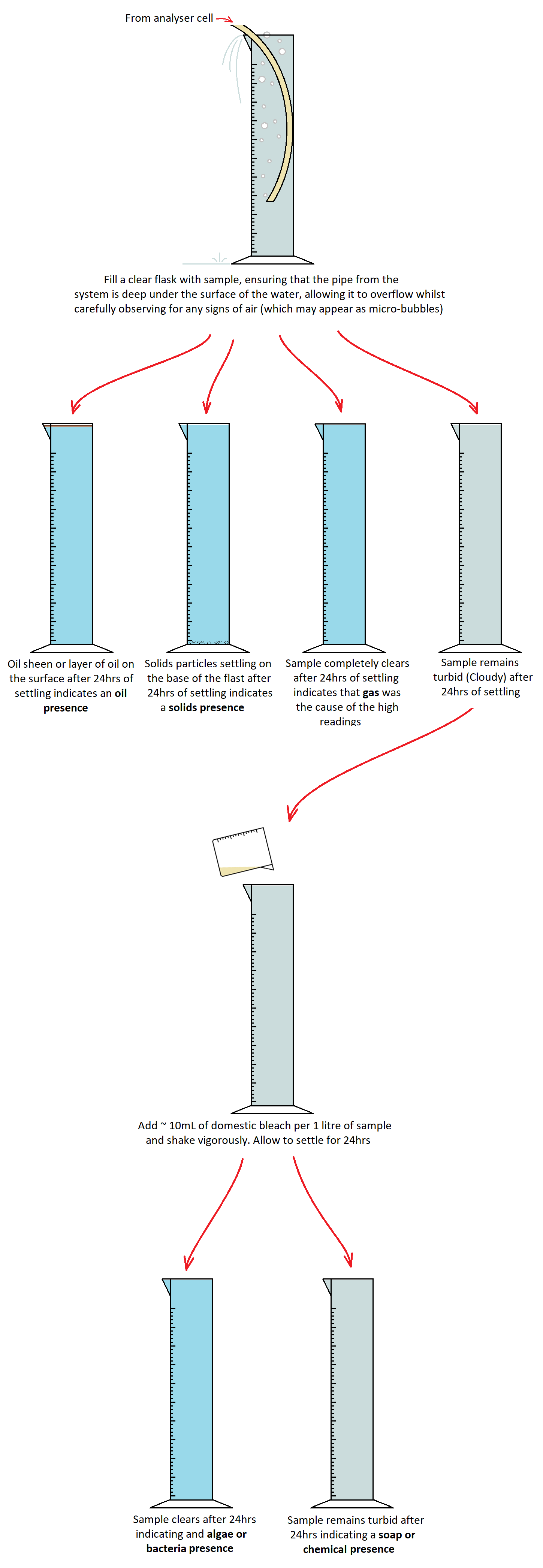Sample contaminant identification
This is a very useful test for indicating what type of contaminants you may have within your sample, that can be carried out with very basic equipment.
Overview
If your oil-in-water analyser is experiencing measurement alarms or questionable measurement results, it is very important to try and understand what is causing this so it can be addressed.
With any spurious measurements or alarms, the first step should always be to clean the measuring cell thoroughly and to ensure that a 0ppm reading can be obtained whilst clean water is within the measuring cell.
There are no guarantees that the fresh water supply on site is clean. Always flush the fresh water line for 30 minutes if you suspect that the supply is dirty before rechecking.
The most reliable fresh water that can be found on site is clean, bottled drinking water. This is a great reference point and typically readily available locally.
The test
If your analyser is reading 0ppm on clean water yet reading high PPM values or displaying errors when sample is introduced, the test below will help to indicate what type of substance is causing this behavior.
Air/Gas, Solids, Oils, soaps and other turbid chemicals may cause high PPM readings. It is important to identify and eliminate these substances from the sample stream at source.

